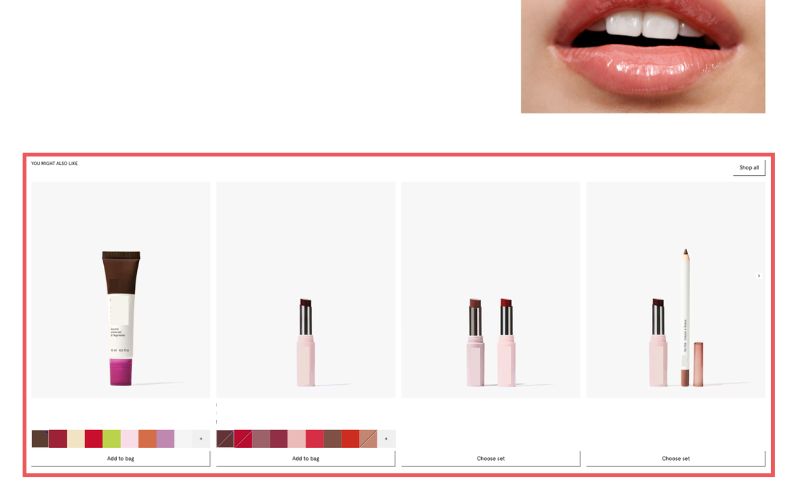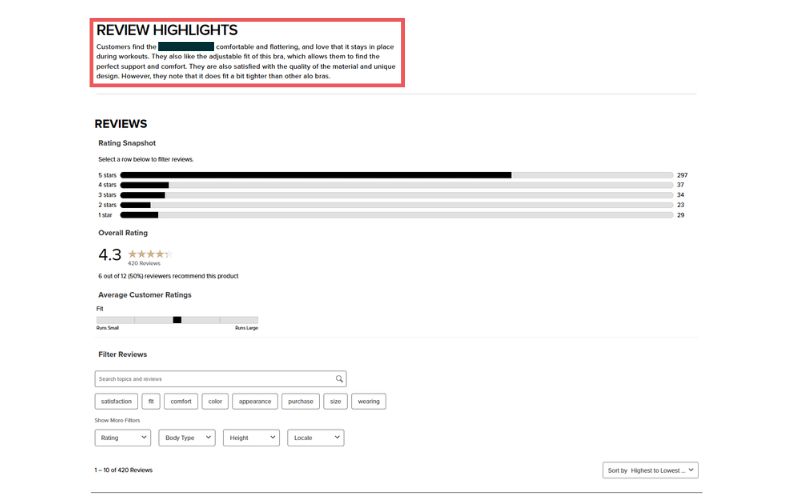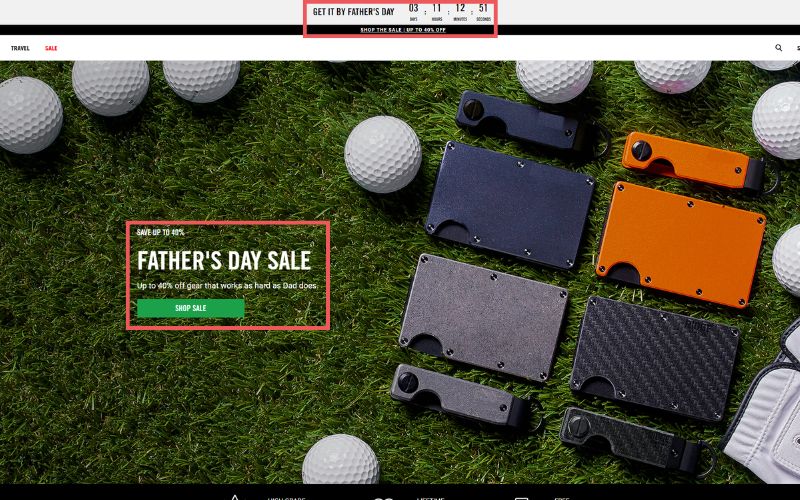Are you trying to start a DTC site for your Amazon brand but can’t seem to figure out how to make it convert? That’s exactly why looking at a CRO checklist for DTC brands matters; it helps you spot the areas that need work so you can start turning traffic into sales.
With how crowded Amazon has become, selling solely on that channel isn’t cutting it anymore. That’s why smart sellers are diversifying and building out direct-to-consumer (DTC) websites, usually through Shopify.
However, most Amazon sellers make the jump to DTC thinking they can copy-paste their Amazon strategies, but that’s where things go sideways, because what works on Amazon doesn’t always translate to your own site. CRO for DTC brands is a whole different beast, and ignoring it means wasting your ad spend and traffic.
So our Amazon agency put together a CRO checklist for DTC brands to help them scale off Amazon. This guide gives you the exact areas to focus on if you want more conversions, better customer retention, and stronger lifetime value.
Table of Contents
Why Is CRO Important for DTC Brands?
Conversion rate optimization (CRO) helps DTC brands turn website traffic into actual sales by improving the customer journey. Without CRO, you risk losing potential buyers due to poor user experience, lack of trust, or friction during checkout.
Some Amazon sellers get excited when they launch a DTC website for their brand. They finally get the freedom to design the experience, own the customer relationship, and run promotions without Amazon’s limitations.
But with that freedom also comes new challenges, because running your own site is an entirely different game. Traffic doesn’t convert by default, and unlike Amazon, there’s no built-in trust or impulse-buy behavior working in your favor.
That’s where conversion rate optimization comes in. CRO is what ensures your traffic turns into sales, and your customers keep coming back instead of bouncing after one visit.
The Complete CRO Checklist for DTC Brands
A high-converting DTC site doesn’t happen by accident, it’s built through consistent conversion rate optimization across your website, product pages, lead funnels, and analytics. This checklist breaks down the essential elements every brand should focus on to improve user experience, reduce cart abandonment, and drive higher conversion.
I. Website
When shoppers land on your site and see that it’s not optimized, they’ll instantly start questioning your brand’s credibility. That’s why it’s critical to make sure your entire website is polished, fast, and easy to navigate, so shoppers feel confident enough to buy from you.
A. Homepage
The homepage is the first thing your visitors see when they land on your site, so it needs to give a clear, professional first impression that builds trust. If it looks cluttered, confusing, or vague, shoppers will bounce before they even know what you’re selling.
Create a homepage that immediately shows what your brand is about and what problem your product solves. Make sure shoppers can tell within five seconds why they should care; otherwise, you’re losing potential conversions right out of the gate.
B. User Experience
If your website is difficult to use or navigate, why would shoppers bother going through all that hassle just to buy something? A poor user experience creates friction, and friction kills conversions fast.
This is why having a clean layout is a must because shoppers should get to what they want without breaking a limb. Why make it hard for users to buy from your store when the goal is to make that process as smooth as possible?
C. Mobile-Friendliness
76% of shoppers use their mobile phones to shop online, so use that stat as a wake-up call. If your site isn’t mobile-friendly, you’re leaving money on the table and frustrating a huge chunk of your audience.
Test your website regularly on a phone to make sure everything loads fast, looks clean, and functions properly. A clunky mobile experience is one of the fastest ways to kill conversions, so don’t let it be your blind spot.
D. Personalization
There’s a lot you can do to personalize the shopping experience on your own site, far beyond what Amazon allows. Using AI and machine learning lets you take this even further with dynamic content and predictive recommendations based on customer behavior.
Around 50% of shoppers become repeat customers after experiencing personalization. If you want stronger conversion rates and long-term loyalty, investing in these smart personalization tools isn’t optional.
E. Checkout Process
Your checkout page is where the money changes hands; don’t make it harder than it needs to be. If the process is long or forces someone to create an account, you’re basically asking them to abandon their cart.
A clean checkout flow means fewer drop-offs, more conversions, and a better customer experience. Keep things short, offer a guest checkout, reduce distractions, and make sure trust signals are in place to give your customers confidence to finish the purchase.
II. Product Listings
Just like on Amazon, it’s just as important to optimize your product listings for your DTC brand. This is your shot to convince shoppers to buy, so everything from your titles to your images needs to be dialed in.
A. Listing Images
About 60% of shoppers look for strong visual content before deciding to buy a product. That’s why your product pages need high-quality images that show your items clearly from all angles to build trust and reduce hesitation.
Use the best images you can while keeping file sizes optimized so your site loads fast. Make sure your photos only show what’s included in the order to avoid confusing buyers, and consider adding product videos, either short clips in the image carousel or longer videos below the fold, to boost engagement.
B. Keyword Research
Keyword research is just as important for DTC brands as it is on Amazon because if your product pages don’t use the right keywords, your ideal customers won’t find you, and if they can’t find you, they won’t buy from you. This makes it critical to know what terms your target audience is searching for and use those keywords strategically.
Start by creating a clear persona for your ideal customer, then base your keyword research on what that persona would type when searching. Once you’ve identified the best keywords, weave them naturally into your product titles, descriptions, and other listing elements to boost visibility and attract qualified traffic.
C. "As Seen On"
When shoppers see your products featured in “As Seen On” sections or styled by celebrities, influencers, and real customers, it builds instant trust and makes them more likely to buy. Showing real people using your products gives potential customers a sense of connection and confidence that your brand is reputable.
Use “As Seen On” sections on your product pages or within your product images to highlight these moments. This social proof not only boosts conversions but also helps shoppers imagine how they could use or wear your products themselves.
D. Customer Reviews
Include a reviews section on your product pages and make sure to highlight the best, most detailed reviews. Responding to both positive and negative feedback shows that you care and are actively listening to your customers.
Offering options to sort reviews or showcasing key highlights can help shoppers find relevant information faster. This level of detail, paired with thoughtful responses, builds trust and nudges hesitant buyers to complete their purchase.
III. Lead Generation
Unlike Amazon, where shoppers come ready to buy, getting leads on your own DTC site can be tough. That’s why having a solid lead generation strategy is key to driving conversions and growing your brand.
A. Advertising
Using ads can boost your conversion rates significantly if you target the right audience. By advertising your products on search engines like Google, you put your brand in front of shoppers who are actively looking for what you sell.
Make sure to do thorough keyword research so your ads show up for terms your potential customers are actually searching. You can also place ads on other websites related to your niche to reach audiences that are more likely to convert.
B. Email Marketing
Although some might think email marketing is an old-school tactic compared to newer channels, it still delivers strong results. It gives you direct access to your audience without relying on algorithms or third-party platforms.
With email, you control the message and can collect detailed data on how customers respond to your campaigns. This insight lets you fine-tune future outreach to boost conversions and build lasting relationships.
C. Blog Posts
Writing blog posts that target the search habits of your ideal customer is a smart way to bring them into your ecosystem. Think about what problems they’re trying to solve or questions they’d type into search engines, then answer those through helpful content on your site.
This allows you to educate while also softly marketing your products and brand. Add CTAs or email capture points throughout the content to turn that traffic into real leads.
D. Social Media Marketing
Social media is one of the strongest lead magnets for DTC brands, and the numbers prove it. 76% of consumers say they’ve purchased a product after seeing it in a social media post.
One of the best ways to take advantage of this is by working with influencers, especially ones who align with your brand and audience. Whether it’s a big name or a micro-influencer, showing real people using your products helps potential buyers visualize how it fits into their everyday life.
E. Discounts
Offering discounts and promotions is a simple but powerful way to turn window shoppers into actual buyers. A well-placed promo or limited-time offer can nudge a hesitant customer to take action and complete their purchase.
You can take it even further by using pop-ups with discount codes to grab emails and grow your lead list. Whether it’s 10% off for first-time buyers or exclusive perks through a loyalty program, these offers make customers feel valued and more likely to stick around.
IV. Analytics
Analytics is a must if you’re serious about increasing conversions. Without tracking the data, there’s no way to know what’s working, what’s not, or where your customer journey is breaking down.
A. Heatmap
Analyzing your website heatmap gives you a clear picture of where users are clicking, scrolling, or dropping off. It helps you identify which areas grab attention and which ones confuse or push users away, so you can fix what’s not working.
By understanding how shoppers behave on your site, you can build smarter strategies that increase conversions. Tools like HotJar show exactly how visitors interact with your pages, making it easier to optimize layouts, CTAs, and content for better results.
B. A/B Testing
A/B testing is one of the most practical ways to figure out what’s driving results and what’s dragging down your conversion rate. As a DTC brand, you can test a single change, like a headline, product title, CTA button, or customer review placement, and compare two versions to see which one leads to more clicks, add-to-carts, or purchases.
By splitting your traffic between the two versions, you’re using actual shopper behavior to guide your decisions instead of relying on guesswork. You can even run more advanced split tests by sending users to entirely different page layouts, say, a long-form educational page vs a short product-focused one, to see which converts better.
FAQs About Conversion Rate Optimization for DTC Brands
What is a DTC brand?
A direct-to-consumer brand sells products directly to customers without going through third-party retailers or marketplaces like Amazon or Walmart.
How does conversion rate optimization help DTC brands?
Conversion rate optimization helps DTC brands get higher conversions from existing traffic by improving website elements like product pages and user experience.
What’s one major reason for low conversions or cart abandonment?
Poor user experience, unexpected shipping costs, or a complicated checkout process often cause cart abandonment and lower your chances of a higher conversion rate.
Ready to Convert? Use This CRO Checklist for DTC Brands
With how condensed the Amazon market is, it’s no surprise that more brands are jumping into the DTC space to take back control of their customer experience and margins. And while platforms like Shopify make setup easy, conversion rate optimization is where most brands hit a wall.
That’s exactly why we built this CRO checklist for DTC brands: to help you cut through the noise and focus on best practices that actually work. From homepage structure to product pages, checkout flow, and everything in between, this guide is meant to help you turn clicks into conversions and browsers into buyers.
Need help growing your DTC brand outside of Amazon? Our full-service Amazon agency offers DTC services that can help you build and manage high-converting sites so you can grow beyond Amazon.









